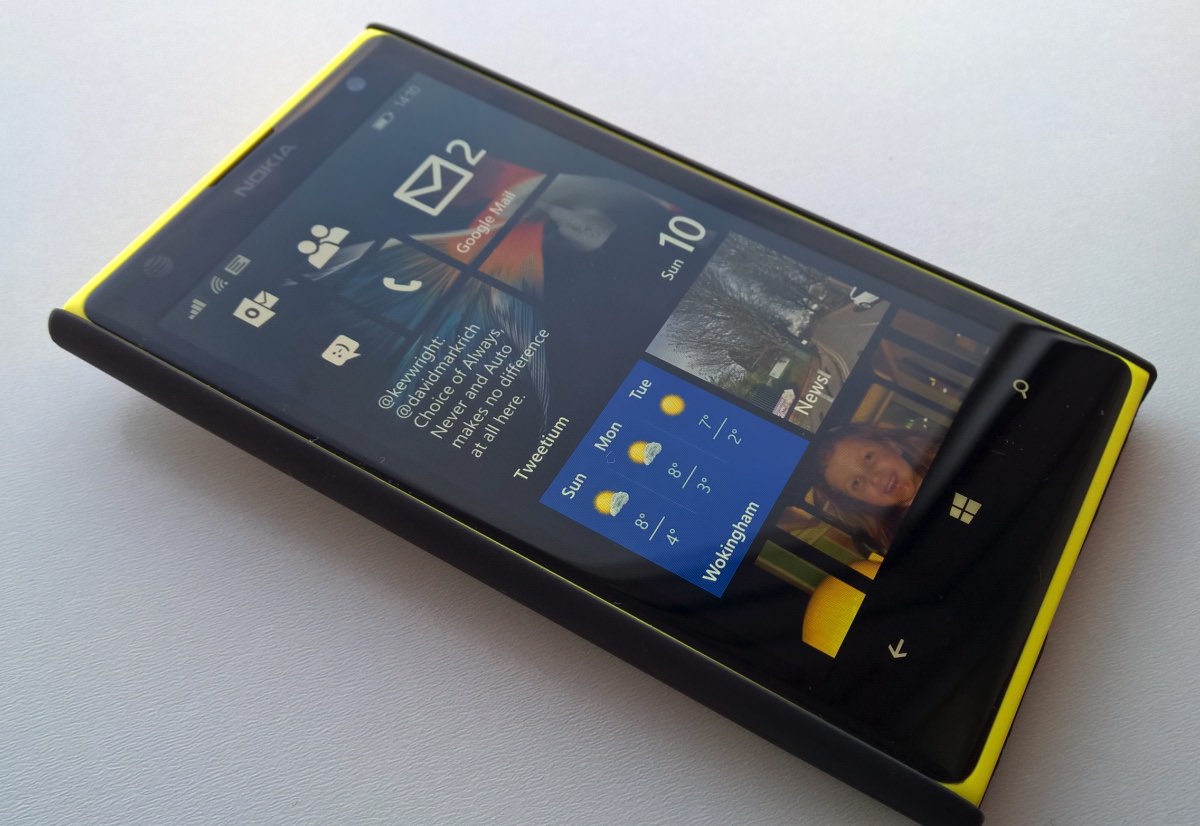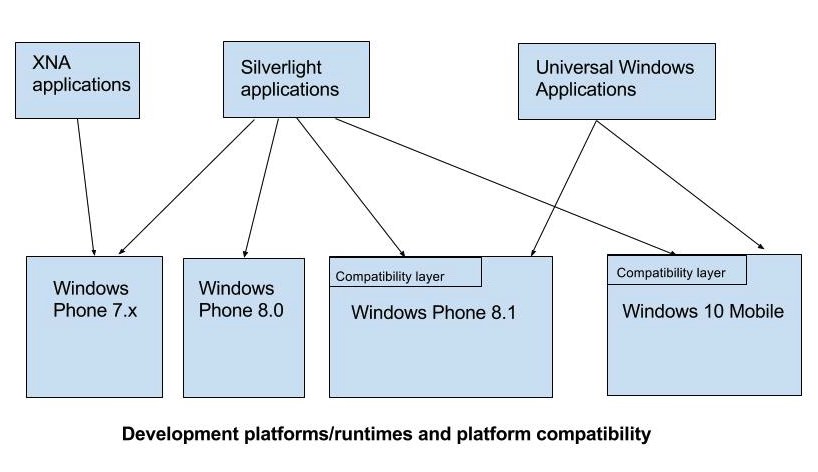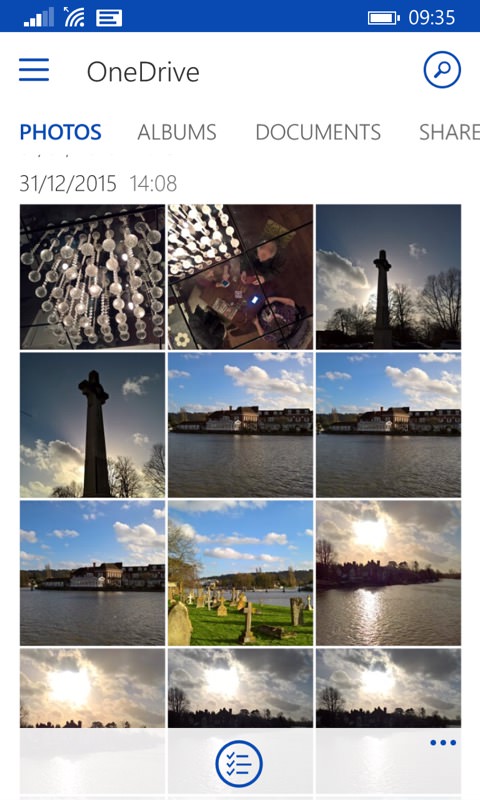
The Lumia 1020, typical in terms of internals of the rest of the Snapdragon S4 generation...
I should emphasise that this particular feature, this little bit of OS gloom and practicality amidst waves of Windows 10 Mobile excitement, is only for the older devices with the S4-based processors. In my tests, the newer devices with Snapdragon 200, 400 and 800-series processors - so that's everything (chronologically) from the Lumia 630 onwards, effectively - will be better off in the long term with Windows 10 Mobile. And if you're not sure what processor your smartphone has then look it up on GSMArena....(!)
The other associated note is that, along with the processor observation, all the older devices have limited screen resolution - the highest is 768p on the likes of the Lumia 920 and 1020. So a lot of the more 'grown up' layouts in Windows 10 Mobile make no real difference anyway - the new OS and interface niceties only really come to the fore when there's 1080p or above to play with, in my experience.
The question then is - to upgrade to Windows 10 Mobile or to stay on 'Windows Phone 8.1 Update 1' (a couple of variants are on 'Update 2', but don't let's complicate things here)? There are, as you imagine, a number of functions and factors to take into account.
Probably the biggest isn't to do with the fancy new features of the newer OS - Hello, Continuum - since these depend on new hardware. What we're talking about here is what to do with the smartphone hardware that you already own. One of the biggest concerns that I have/had is/was to do with all the new universal applications being written for Window 10. New functions, new ideas, new cloud syncing, new compatibility with what's happening on all our desktops and laptops, and so on. After all, surely these are Windows 10 Mobile-only?
Actually no, the vast majority of 'universal applications', as seen on Windows 10 in all its variants, are fully compatible with Windows Phone 8.1. In fact, compatibility with universal applications and with Windows 8 on the desktop, was part of the pitch for 8.1 in the first place.
This is best explained graphically, so here goes:

So, in terms of application compatibility, the majority of applications, whether Silverlight-written or 'universal', are identical in terms of Windows Phone 8.1 and 10 Mobile. In practice, there are examples where applications are recent enough that the developer has been specifically targetting 'Windows 10' and in these cases there's either no version for Windows Phone 8.1 or perhaps a separate, older version available in the Store for that platform. But such apps are the exception rather than the rule in my testing.
Examples of really good third party universal applications that work just as well under Windows Phone 8.1 include Tweetium, Aeries, TED and Tubecast Pro. There are dozens, if not hundreds of others, of course.
So - we have faster operation, roughly twice as fast for Windows Phone 8.1 than for '10', for the same hardware, as measured in my real world tests. And we have almost as big an application pool to draw on. You can see where I'm going here, hopefully. Let's examine a few other wins in staying with 8.1 and spurning Windows 10 Mobile:
- Word Flow is faster too, under 8.1. Even on the fastest flagships (e.g. Lumia 950), Word Flow is broken under Windows 10 Mobile in my opinion. Gestures are often incomplete, and recognition and suggestions poorer than we're used to seeing from a year of the feature under 8.1. It's not yet fit for purpose under Windows 10 Mobile and on all my W10M devices I've gone back to tapping on the virtual keyboard with my thumbs. Under 8.1 there are no such problems and Word Flow works really, really well. Update. With Build 63, released after this article was published, Word Flow seems much better under Windows 10 Mobile. Phew. Mind you, it was fine a month ago too, and Microsoft 'broke it'. Still, credit where credit's due?
- On compatible devices, Glance screen is much more complete, allowing for tie-ins with Weather and a weather forecast with a cheery wave of a hand over the proximity sensor. Moreover, the Glance background doesn't have to be the same as the lockscreen, since the two subsystems are separate under Windows Phone 8.1.
The speed is the main thing though - whether starting up or checking email or 'typing' a text, everything's just smoother and faster under the old, more optimised mobile version of Windows. And I don't think that Windows 10 Mobile, with all the optimisation in the world, will get close to this speed on these older Snapdragon S4-based phones.
There are downsides to (in my case) going back to Windows Phone 8.1 or (in most cases) simply sticking with 8.1 and refusing the update to Windows 10 Mobile when it finally comes in April (or thereabouts):
- You'll miss out on the latest under-the-hood security patches and modules. Not that this is a showstopper, since Windows Phone 8.1 was always a small enough platform that no bad guys ever targetted it for malware. But worth noting nonetheless.
- You'll miss out on the Maps improvements made for Windows 10 Mobile, including better real time traffic awareness and allowance, display and cameras, plus the integration of transit routing into the main app. These improvements are real, though note that a) not everyone's a fan of the fonts and styles used by Windows 10 Mobile Maps and b) the traffic awareness is still not fully real time, in the way that Google Maps/Navigation is on Android - so it's still something of a half-baked implementation.
- You'll miss out on the 'full' Office applications, with the versions on Windows 10 Mobile having essentially the same functionality as the full suite, as accessed from the Store, on PCs. Mind you, you'll also miss out on nags about having to sign up for Office 365, and in any case trying to shoehorn all that Office functionality onto a 4.5" screen isn't a massive success, I dare to suggest. When was the last time you edited (as opposed to viewed) an Office document on a phone? Exactly.
- You'll miss out on the marvel that is Windows 10 Photos, keeping the exact same image bank across all devices for which you're signed in. This isn't the fastest solution in the world, but it does work really very well indeed. Don't be too disheartened on Windows Phone 8.1 though, since the integration of photo backup with OneDrive (your 'SkyDrive Camera Roll') and the way the universal client for the latter pops out photos in their own 'tab' means that you can enjoy the exact same photo set, albeit accessed slightly more lethargically, on the older OS. The OneDrive screenshots below were captured on a Lumia 1020 running 8.1, yet the photos are from my Lumia 950 XL, all easily accessible on the older platform, automatically:


- You'll miss out on full support for Bluetooth keyboards - the mythical Human Interface Device profile was only added in Windows Phone 8.1 Update 2 and beyond. This is more important that it sounds, especially if you fancied hooking up a keyboard and getting productive on, for example, train journeys.
- Similarly, you'll miss out on wireless printing, though in fairness the list of compatible printers for Windows 10 Mobile still isn't that large - our own printers weren't on the list - sigh.
- You'll miss out on Edge, the new browser, meaning that you'll have to stay with Internet Explorer, with all its traits and quirks. Having said that, it's early days for Edge and it has its own 'traits and quirks', but in the long term the new, much more modern browser does seem to cope better with 2015/2016 HTML5-centric web sites. Do remember that there are other web browsers available for Windows Phone 8.1 though, not least Surfy and Opera Mini.
- You'll miss out on the new, far better organised Settings hierarchy. But hey, you've lived with the mess in Windows Phone 8.1 for years, you can probably survive a little longer?
On paper, the 'downsides' outnumber the upsides of staying with Windows Phone 8.1 (Update 1 or 2), but the speed and smoothness 'upsides' are huge. If we've learned anything from the last ten years in smartphones, it's that user experience really does matter. Given this, and that virtually all the new universal applications are also available for the older platform, as per the chart above, how many people's phones will be copying my Lumia 1020 and staying on 8.1, at least for the time being?
Because this is likely to become something of a FAQ, I've tabulated Windows Phones and my recommendations below, here with current (as of January 2016) timing estimates:
| Update type/date for Windows 10 Mobile |
User data and applications preserved? |
Recommended to accept the update? |
Phone models |
| Arriving with it on-board: | n/a | n/a | Lumia 550, 950 , 950 XL |
| Over the air update starting end January 2016 and through April 2016 | Yes | Yes | Lumia 430, 435, 532, 535, 540, 630, 635, 640, 640 XL, 730/735, 830, 930, 1320, HTC One (M8), 1520, Icon |
| Over the air update starting March 2016 and through June 2016 (if ever) |
Yes | No | Lumia 520, 525, 620, 625, 720, 820, 920, 925, 1020 |
| Update via PC utility, starting March 2016 |
Backup/restore needed | Yes | Lumia 530 |
| Likely to stay on Windows Phone 8.1* |
n/a | n/a | HTC 8S, HTC 8X, Samsung ATIV S, Yezz Billy 4, Yezz Billy 4.7 |
* any phones not mentioned (including the odd 'dual SIM' variant) are likely to be from lesser manufacturers
Perhaps I've been too harsh and impatient - maybe there are some huge optimisations for the older S4 processors that are yet to come in a future update, but Windows 10 Mobile has now been in testing for getting on for a year and we're now at the point of fixing niggles rather than wholesale rewrites of the UI code. I've simply lost confidence that Windows 10 Mobile will, overall, improve the smartphone experience for roughly half the installed base of Windows Phones.
Microsoft, please prove me wrong, we're only talking bits and bytes, after all, everything's possible in software - I'll come back my tests and this feature in a couple of months.
